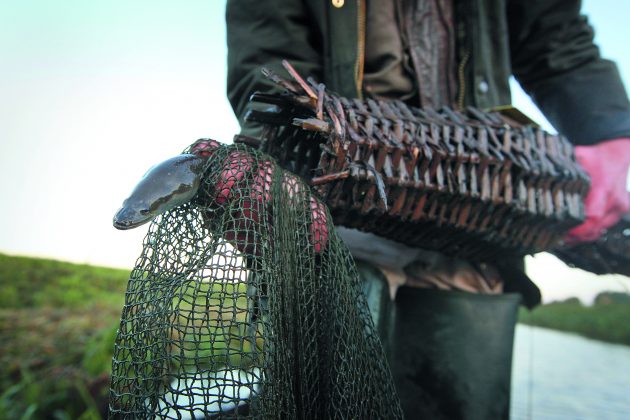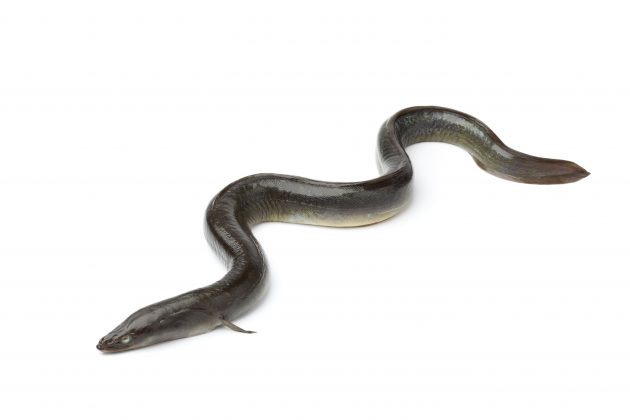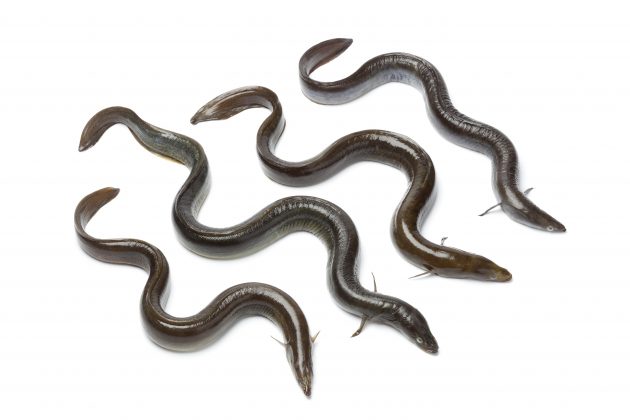Its migration is among the most incredible feats of the natural world but the once-prolific European eel is now critically endangered – and needs our help
Do your laces up, Michael,” Miss Watson, my teacher, commanded “I don’t know how,” I replied. “Nanny hasn’t taught me yet.” “Well come here and I’ll teach you,” she responded. I was five years old and this was my first term at pre-prep school. “Where did you get these laces from?” asked Miss Watson. “I’ve never seen anything like them before.” “I made them,” I said proudly, “out of the skin of a European eel that I caught.” She leapt back as if I had said they were made of adders and I went around with untied laces for the rest of the day. Since that early age, I have always held the European eel in high regard.
THE EUROPEAN EEL: A LIFE EXTRAORDINARY
Apart from being delicious to eat, either naturally or smoked, the European eel, Anguilla anguilla, has many uses. I was taught how to catch and skin an eel by our gardener, who was also the local poacher. He was a fount of country knowledge and, as a small boy, I worshipped at his feet. I am not going to write about catching eels, as that is another article entirely, but few people know how to skin them. It is simplicity itself: nail the head of the eel to a wooden door. Then, with a sharp knife or razor, cut around its neck only skin deep. With a pointed pair of pliers, gently pull the skin down the eel’s body. The skin can then be cured with salt and cut into strips for shoelaces.

There was a time when the European eel was plentiful and every stream, river, lake and pond abounded with them. Most of the chalkstreams had eel traps built into them and they produced huge quantities of eels, the sale of which was the riverkeepers’ perk. They were the food of the poor – the jellied eels of the East End of London were world-famous – and a part of London culture, hence Eel Pie Island. Suddenly, however, these wonderful creatures, whose migrations are among the most amazing on the planet, are on the endangered list.
Incredible journey
The eel’s life cycle is truly extraordinary. They are born in the Sargasso Sea, in the north-west of the Atlantic Ocean, so called because of its floating weed, Sargassum. It is the only sea on the planet that is not surrounded by land but by four mighty currents forming an ocean gyre. Using these currents, the baby eels, which resemble translucent willow leaves, make their way to Europe and the British Isles, a journey that can take more than three years.

As they near their destination, they make their first metamorphosis into glass eels: thin rods, shorter than a finger, which are virtually transparent. These in turn have their own transformation into elvers, which are essentially tiny eels. These swim upstream, close to the bank to avoid the river’s current, and gradually change into yellow eels, so named due to the brownish-yellow colour of their sides and belly. At this point all our eels distribute themselves into streams and ponds, lakes and meres, and anywhere there is water. Here they will stay for anything from 10 to 30 years.
Eels are carnivores, so their freshwater food is primarily worms, insects and other fish, dead and alive. They are particularly partial to crayfish and young frogs. They will happily stay in the same surroundings all their freshwater lives, slowly putting on weight. The average length of mature eels in freshwater is two- to two-and-a-half feet, although specimens have been caught that are nearer four feet. The record eel weighed 11lb 2oz, caught in 1978.
One autumn day, around the time of the harvest moon, the European eel undergoes its final transition. Its skin becomes thicker and its eyes larger and more blue in readiness for the depths of the sea because the urge to reproduce its kind has taken over its existence. The yellowish-brown of its skin disappears, its back turns black and its sides silver, and the yellow eel becomes a silver eel. Now its fins grow larger to help it on its way. Its stomach dissolves and, depending on its sex, is replaced by milt or roe, for it will feed no more during its last miraculous journey. Then, wherever it is, be it lake, pond or stream, it makes its way to the nearest main river and thus to the sea and the Sargasso. If this entails travelling cross-country the eels will do so, for they can survive out of water for three to four hours.
Miracle of nature

I was once lucky enough to witness this incredible sight. One autumn evening I had been fishing Hugh Falkus’ river, the Cumbrian Esk, for a late-run salmon. Falkus’ cottage, where I was staying, is not far from the river and I was about halfway there, walking beside a ditch, when I heard a rustling in the grass. In the near darkness I saw movement and realised, with awe and excitement, that I was witnessing an eel migration as more than 100 eels headed for the main river.
The journey back to the Sargasso Sea takes up to a year to achieve. We know that the salmon, upon entering its natal river to spawn, feeds no more but the eel’s journey is further and it starves for longer. Considering the effort and energy that journey takes, it is a true miracle of nature. We still have little knowledge about this time in the eel’s life except that eventually, after swimming 3,700 miles, it reaches the weedy home from whence it came, where it will mate, spawn and die.
Serious trouble
Almost since the beginning of time this has been the fascinating life cycle of the eel. However, it seems there is a sad inevitability that, like with the Atlantic salmon, mankind has worked at and nearly succeeded in destroying this living proof of nature’s creativity. For millennia the eel was the most prolific freshwater fish that swam in British waters. Now, tragically, it is in serious trouble.

Since the 1970s the population has declined by 97%. There are several causes for this. There is a huge illegal trade in glass eels, as they are a delicacy in the East. A man was caught in Southampton with 800lb of glass eels in his lorry that he would have sold to China for £2,000 a pound. The electric turbines on our weirs have cut tens of thousands of eels to ribbons but, thankfully, eel ladders have recently been built. However, one of the greatest reasons for their decline is a parasite, Anguillicoloides crassus, which appeared when the Japanese tried to farm them and quickly spread everywhere. It affects the eels’ swim bladder, which regulates the depth at which they swim. During the day eels use the depths, sometimes as far down as 3,000ft, in order to avoid predators, but they swim in far shallower water at night. Without the guidance of their swim bladders, they sink to the bottom and die.
Hopes for recovery

Recently I have noticed, in the clear waters of the chalkstreams, eels where I have not seen them for many a moon. Thus it is with a creeping hope that I write that maybe, just maybe, they are making a recovery, and that the work of such bodies as the Sustainable Eel Group is having an impact.
Incredibly, one of the rare benefits of the coronavirus outbreak was its positive impact on eel populations. As borders were closed and travel restrictions were imposed, poachers preying on highly prized glass eels were stopped in their tracks, giving the eels time to recover.
The pandemic also gave the anti-poaching bodies time to pass laws to protect the eel. As a result, vehicles can be permanently confiscated and heavily deterrent fines imposed. For second offences there are even prison sentences and these powers are being used throughout Europe. Thus there is hope in my heart that these extraordinary creatures will be saved and allowed to live in harmony with us on this planet. It would be the ultimate condemnation of man’s wanton destruction of nature if the European eel were allowed to die out.




